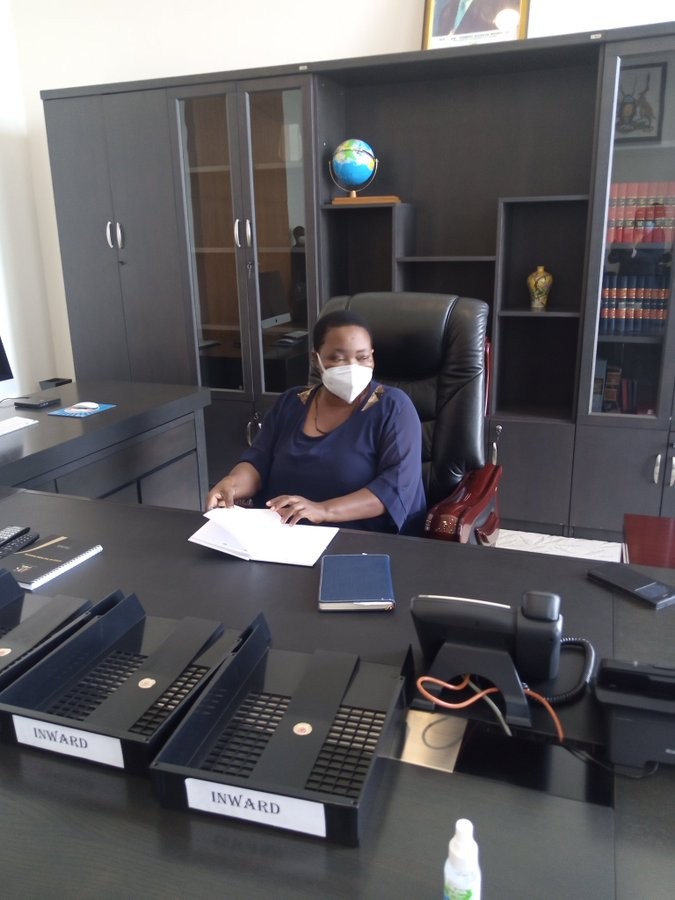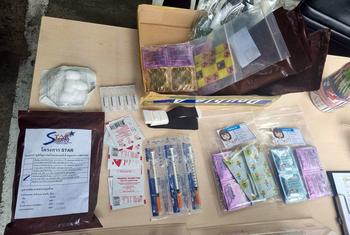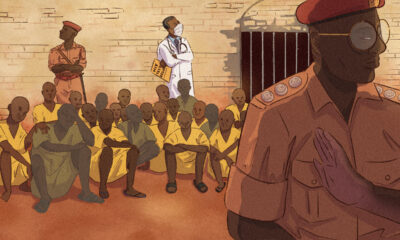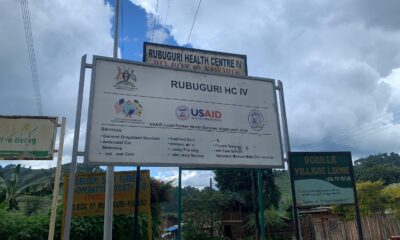Health
Delta variant replaces Wuhan COVID-19 strain in Uganda
The recent laboratory findings, it appears the Delta (Indian) variant has replaced the original Wuhan COVID-19 strain in Uganda, Prime Minister Rt. Hon. Nabbanja Robinah has revealed.
According to the PM, evidence from other settings indicate, the UPSUrge appears 2 to 3 months after the introduction of a variant into community. In India, the emergence of the delta variant in September 2020 was followed by an UPSUrge in cases from December.
She however says that in addition to the variants, adherence to the standard operating procedures was poor and the population continued to mix at household level, public transport, places of worship, workplaces, burials and other cultural events, illegal bars and in complex social networks.
“These congregations drove the daily number of cases, the higher mortality rate and informed H.E the President’s directives for major containment on 6th June 2021” Nabbanja says.
In a statement slated to be presented before Parliament on Wednesday next week, the Prime Minister says that with the lockdown, they intend to register a reduction in the number of positive cases.
On 18th June 2021, President Yoweri Museveni instituted a second lockdown, updating the previous measures.
She argues that the current lockdown, that was guided by scientific principles of preventive medicine as evidenced elsewhere is intended to de-congregate the infected and the susceptible individuals to deny the virus a chance to propagate.
“Evidence from other settings show that it slows down and reverses the transmission. Given the long incubation period of the virus, the effects of the current lockdown have started to yield results as earlier anticipated. According to our scientists, the country was MOST likely expected to reach the peak of the number of daily cases between July 2021 and August 2021 before we start registering a gentle drop” she added.
In the 42 days’ containment measures, Government intended to maximize the opportunity presented by the lockdown to: Enhance measures to interrupt transmission of COVID-19 among health care workers, strengthen measures to interrupt transmission within communities through targeted risk communication, streamline and strengthen Home-Based Care for COVID-19, continue with vaccination depending on availability of vaccines.
Since the entry into the 2nd Wave of the COVID-19 pandemic, there is an increased demand for care of people with COVID-19. The Ministry of Health continues to implement the Home-Based Care
strategy which started in the first wave. This strategy cushions the health facilities from overload with asymptomatic and moderately ill COVID-19 patients who do not require sophisticated care and can be monitored in their homes. However, inadequate engagement between the formal health system, the VHTs, and lack of motivation has affected implementation.
In her statement, the Prime Minister says districts are not taking the HBC intervention as a priority hence little attention is being paid to HBC implementation. She mentions some of the challenges of home care as; limited funding to support I-IBC implementation both at national and sub national level, HBC data capture is complex and as of now is manual. Reporting is done through phone calls which does not facilitate real time data required for prompt action.
Nabbanja says efforts are to make HBC a decentralized district led intervention and funded through the Ministry of Local Government, Guidelines have been developed in which;
Every district must designate a I-IBC coordinator: to oversee I-IBC implementation which among others include; Linking patients to care in the health care facilities, supporting those systems/structures that facilitate monitoring of patients, initiate referrals to health facilities and facilitating timely reporting.
The Premier added that Regional and district task forces have requested to actively support HBC implementation and as quickly as possible integrate HBC into District and Partners work plan.
She noted that unlike in the first wave, where the majority of severe and critical cases were above the age of 60 years, the second wave is characterized by a shift to high number of cases among the age group below 40 years and many presenting unfavorable clinical outcomes.
The rapid rise in the number of cases has had an overwhelming impact on the provision of clinical care. There is a rapid increase in the number of cases admitted to isolation facilities, on average all positive cases.
In May 2021, admissions were between I to 2 new cases daily, this has risen to an average between 100 to 120 cases daily. Majority of those admitted are severe in High Dependence Unit (HDU) and critical in Intensive Care Unit (ICU). This has drastically increased the oxygen requirements. The average daily oxygen consumption for the two categories of patients is dictated by delivery pressure and volume.
Hon. Nabbanja says that the more the number of patients on the same system at the same time, the eventual reduction of the delivery pressure. Each COVID-19 patient consumes 4 to 6 cylinders per day as opposed to I to 2 cylinders per day for non-COVlD-19 patients.
Adding that despite a reasonable bed capacity available, the very high oxygen requirements remain a major constraint to expanding functional bed capacity.
“At the height of the pandemic, with high proportions of severe and critically ill patients, there was a strain on oxygen pressures in all treatment facilities where the public treatment facilities were full and therefore many patients ended up in private facilities. The charges in private facilities ranged above 3,500,000/= per day per patient in ICU, which is high for an average Ugandan. Government is working with the private facilities to ensure equity in access to quality COVID-19 care in and outside the government owned” Rt. Hon. Nabbanja tells the country.
The Ministry of Health has also observed an increasing number of health care worker infections particularly, in health facilities that do not routinely admit Covid19 cases. The Premier however says that Government has not recorded any health care infections among ICU or HDU health care workers managing COVID- 19 patients.
The National COVID-19 Testing Capacity
The Polymerase Chain Reaction (PCR) test volumes have increased by 2 folds in the 1 st half of June, from 74,000 per month to 1 51 ,000 and this is projected to exceed 320,000 by the end of July, this will be a 4 fold increase in volumes, where Of the are tested by the National Reference Laboratories i.e. UVRIEntebbe, and CPI-IL Butabika.
Out of the 12 laboratories accredited to test for public response, only 4 are testing.
Laboratories that use Abbott platforms require reagents and financial support. while University labs like Makerere and GUIU also require reagents, supplies, human resource and financial support. While the mobile laboratories are functional, additional human support would enhance the Output.
Government has established GenExpert testing at all Regional Referral Hospitals to support critical testing — so far 6 regional hospitals are testing (Mulago, Kabale, Masaka, GUIU, Lira, and Awa) and by end of next week all regional referral Hospitals will be able to test. These were enhanced with 1 6 module GenExpert machines and gene expert cartridges.
Government is also setting up of Conventional PCR capacity at 4 different regional referral hospitals to support testing of samples from those regions i.e. Fort portal up and running, Kabale, Hoima, and Jinja.
The Ministry of Health started the use of Antigen RDTS in November 2020 in 30 priority districts as a pilot to inform the scale UP.
Currently, Ministry of Health has distributed RDTS to all the 135 districts, all regional referral Hospitals, National referral hospitals, district Hospitals, Health Centre IVs, HC Ills, Uganda Prisons Isolation centres and Non-traditional Facilities like Namboole.
The Ministry has initiated outreach testing camps using Antigen RDTS to increase access and reduce the volume of samples referred to Central Labs and to decongest the health facilities. In Kampala metropolitan area, 25 sites have been set up. A similar approach of outreach camps will soon begin in all districts.













































